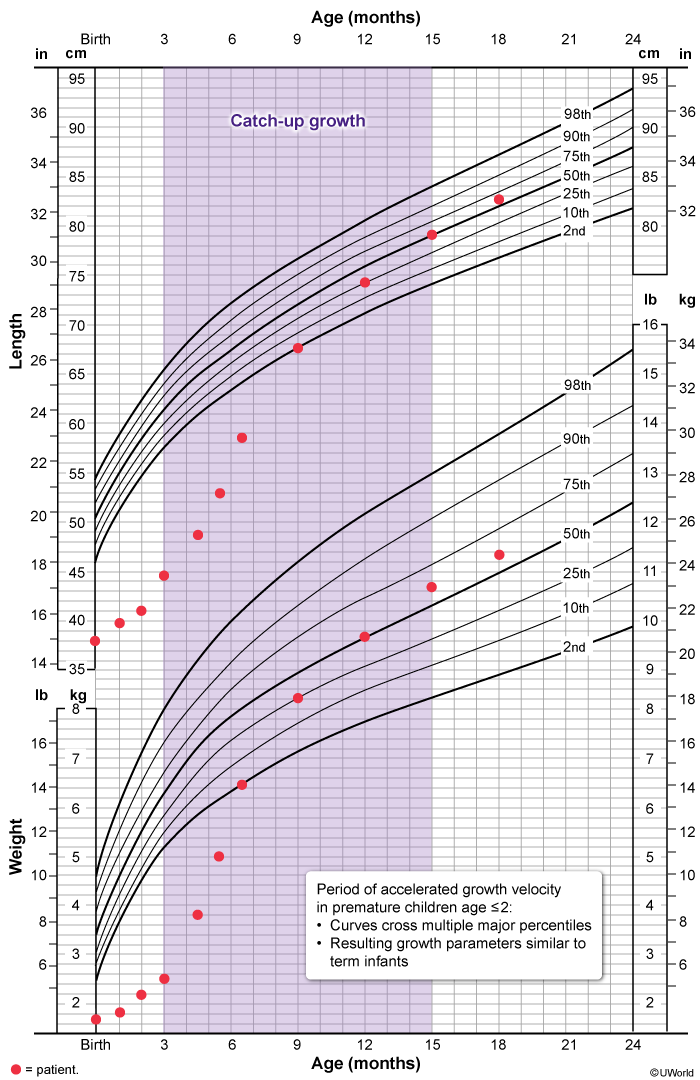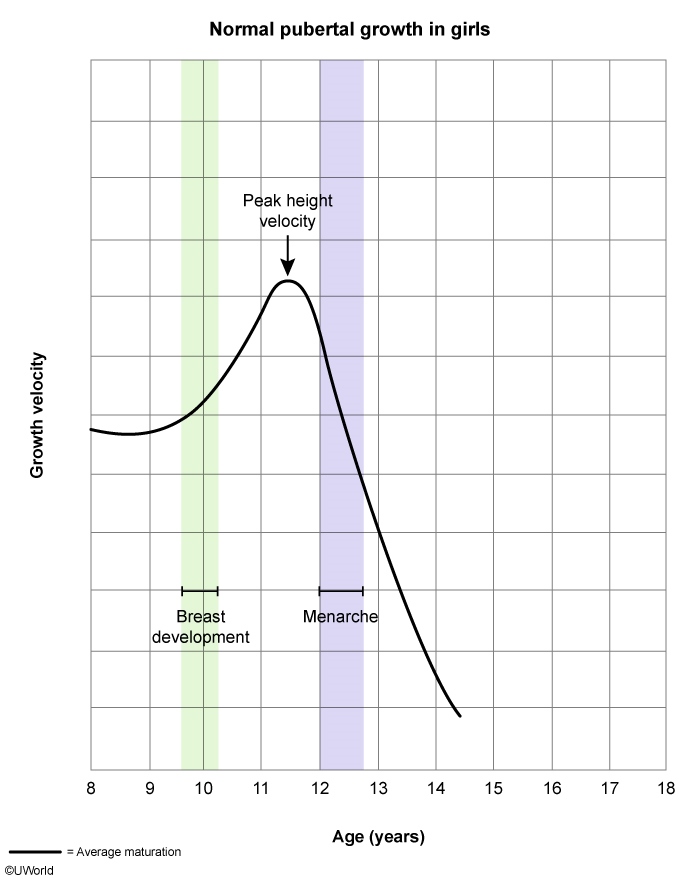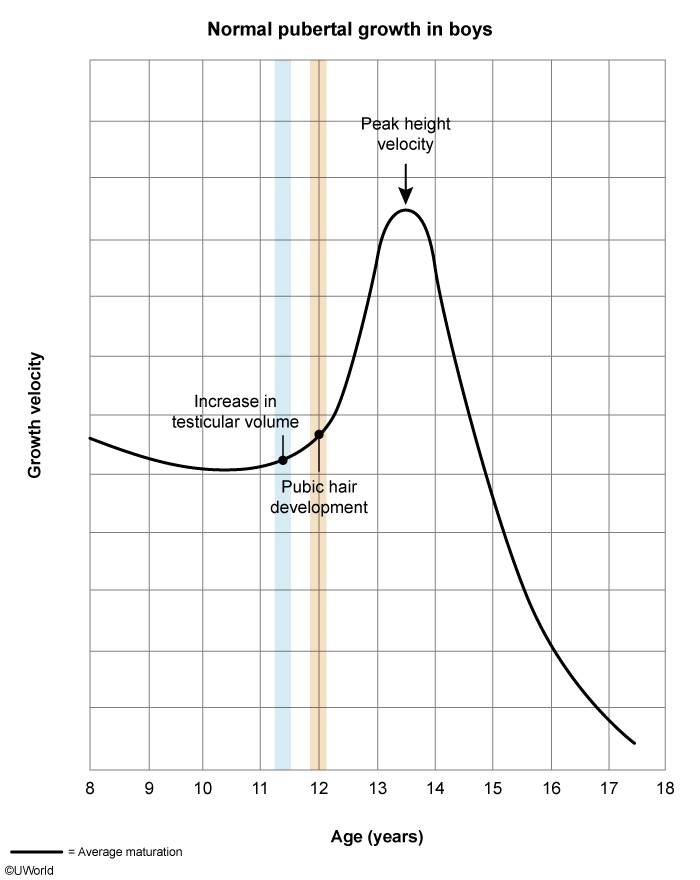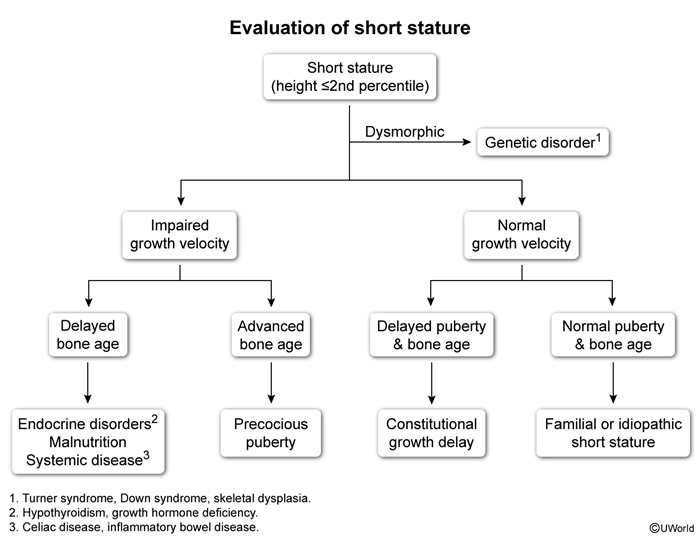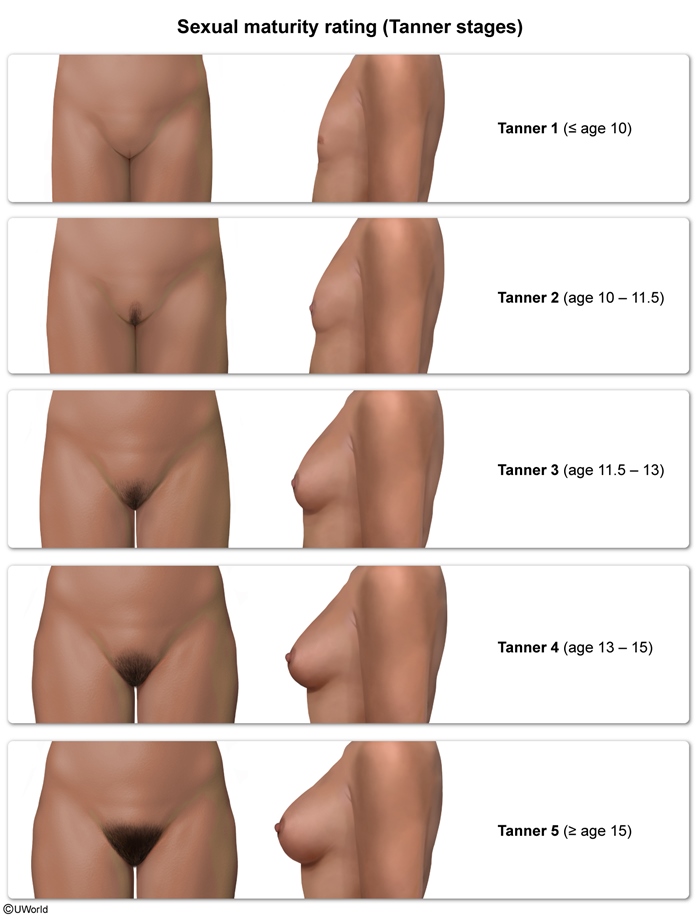Short Stature
Article Sections
Introduction
Short stature is defined as height more than 2 standard deviations below the mean for age and sex (ie, <2nd percentile). It is most commonly due to a physiologic growth variant such as constitutional growth delay or familial short stature; however, it can also be secondary to pathologic causes, such as primary growth disorders, endocrine conditions, and systemic disease.
Normal growth
Stature and growth velocity are regulated by complex interactions between genetic (eg, SHOX gene), hormonal (eg, growth hormone [GH], estrogen), and environmental (eg, nutrition) factors. These factors ultimately determine the degree of chondrocyte proliferation at the growth plate until chondrocyte senescence and growth plate closure in late adolescence.
Height/length growth can be divided into 3 phases during childhood:
- Infant and toddler growth
Continue Learning with UWorld
Get the full Short Stature article plus rich visuals, real-world cases, and in-depth insights from medical experts, all available through the UWorld Medical Library.
Figures
